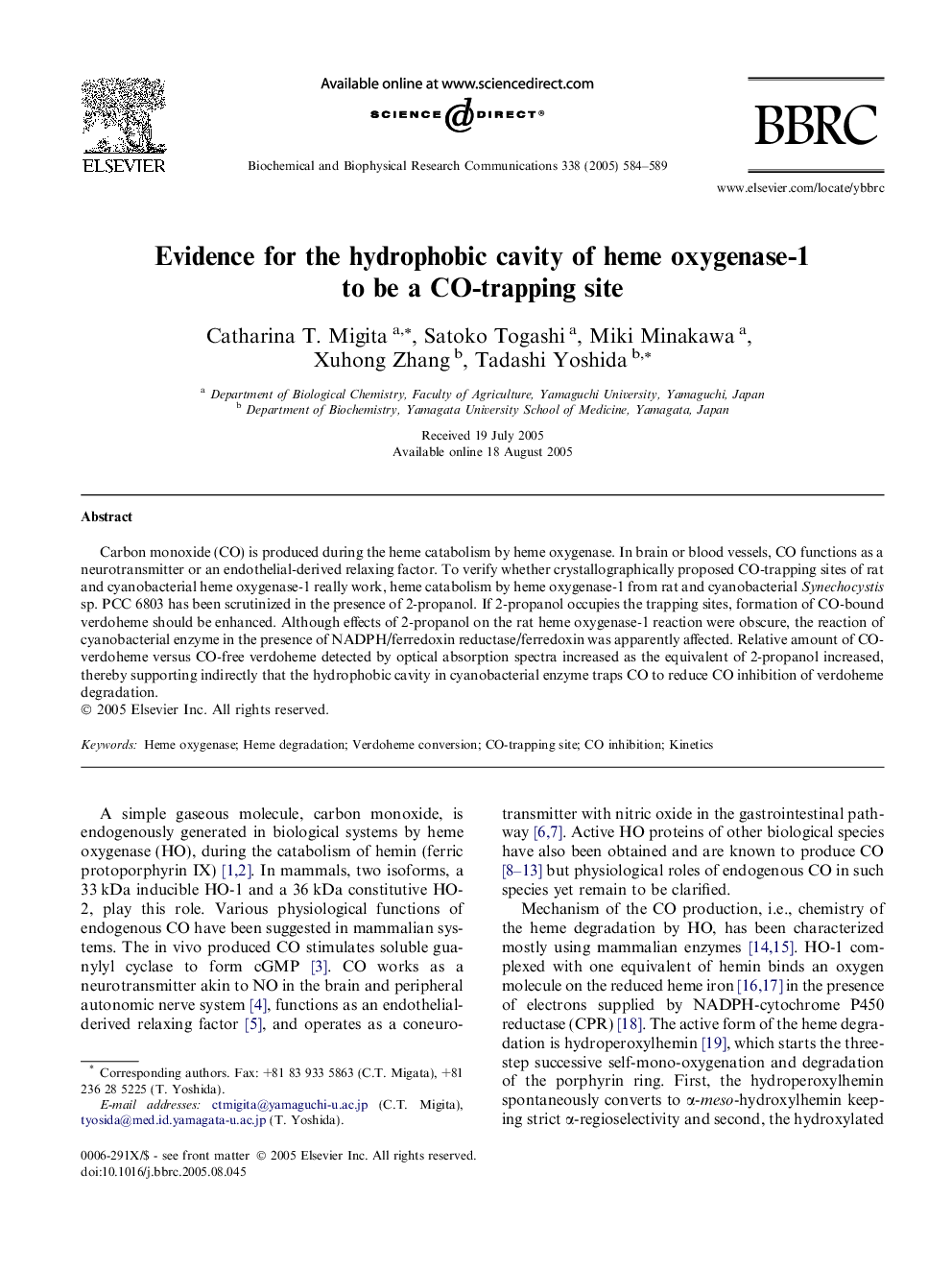| Article ID | Journal | Published Year | Pages | File Type |
|---|---|---|---|---|
| 10768220 | Biochemical and Biophysical Research Communications | 2005 | 6 Pages |
Abstract
Carbon monoxide (CO) is produced during the heme catabolism by heme oxygenase. In brain or blood vessels, CO functions as a neurotransmitter or an endothelial-derived relaxing factor. To verify whether crystallographically proposed CO-trapping sites of rat and cyanobacterial heme oxygenase-1 really work, heme catabolism by heme oxygenase-1 from rat and cyanobacterial Synechocystis sp. PCC 6803 has been scrutinized in the presence of 2-propanol. If 2-propanol occupies the trapping sites, formation of CO-bound verdoheme should be enhanced. Although effects of 2-propanol on the rat heme oxygenase-1 reaction were obscure, the reaction of cyanobacterial enzyme in the presence of NADPH/ferredoxin reductase/ferredoxin was apparently affected. Relative amount of CO-verdoheme versus CO-free verdoheme detected by optical absorption spectra increased as the equivalent of 2-propanol increased, thereby supporting indirectly that the hydrophobic cavity in cyanobacterial enzyme traps CO to reduce CO inhibition of verdoheme degradation.
Related Topics
Life Sciences
Biochemistry, Genetics and Molecular Biology
Biochemistry
Authors
Catharina T. Migita, Satoko Togashi, Miki Minakawa, Xuhong Zhang, Tadashi Yoshida,
